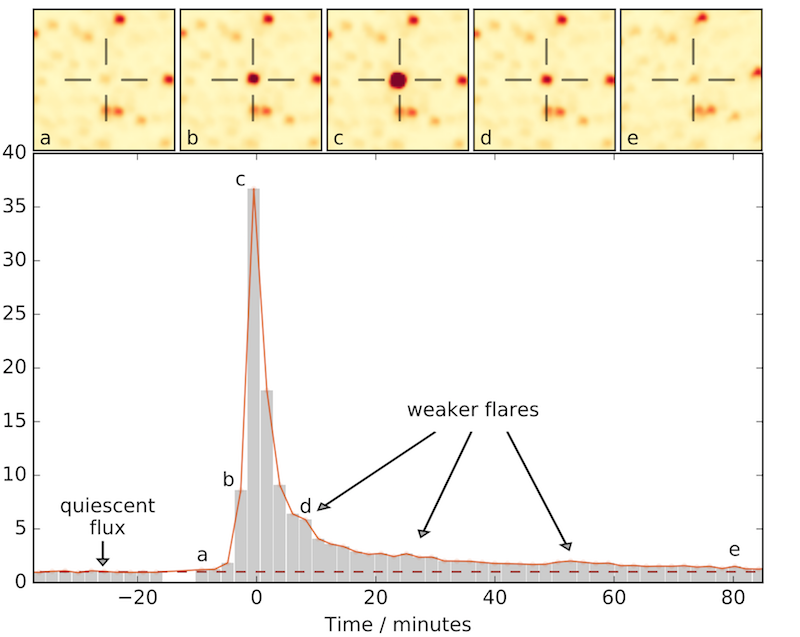The Evryscope has detected a superflare that briefly made the tiny star Proxima Centauri, the nearest star to our Sun, 70x brighter. Proxima b is a terrestrial-mass planet in the habitable-zone of Proxima Centauri. Proxima Centauri’s high stellar activity however casts doubt on the habitability of Proxima b: sufficiently bright and frequent flares may destroy the planet’s ozone layer, allowing lethal levels of UV flux to reach its surface. In March 2016, the Evryscope observed the first naked-eye-visible superflare detected from Proxima Centauri.
Proxima increased in brightness by a factor of ~68 during the superflare, reaching a brightness just visible to the naked eye at dark sites (and easily seen with binoculars, if someone was looking in the right direction). It’s probably worth mentioning that some people on Twitter have misinterpreted our paper to suggest that we’re claiming this event would have been easily visible to most people at most sites — which it would not have been, and which don’t claim in the paper. We just use “naked-eye” as a compact way to say the event reached a brightness in visible-light that can be detected by the human eye without optical aids under ideal conditions, to give an idea of how bright it was compared to most astronomical events.
Our statistics suggest that Proxima produces a superflare around five times a year — and some of those flares would be even brighter than the one we saw, perhaps even to the level that they could be easily visible to many people around the world. So there’s a (very) small chance that if you’re in the Southern Hemisphere and look up at Proxima Centauri, you could see a superflare going off!
In our paper, we show that the repeated flaring is sufficient to reduce the ozone of an Earth-like atmosphere by 90% within five years. We estimate complete depletion occurs within several hundred kyr. The UV light produced by the Evryscope superflare reached the surface with ~100x the intensity required to kill simple UV-hardy microorganisms, suggesting that life would struggle to survive in the areas of Proxima b exposed to these flares.
Above: the Evryscope discovery of the first naked-eye superflare from Proxima Centauri. Proxima got 35x brighter in a single Evryscope two-minute exposure; over the shorter timescale of the human eye Proxima increased in brightness by a factor of ~70x.


